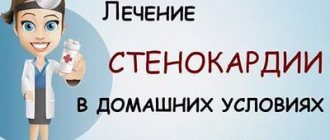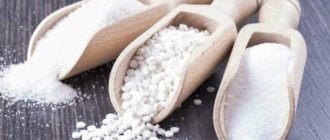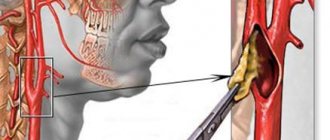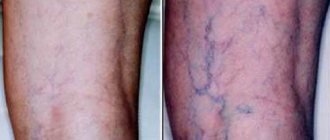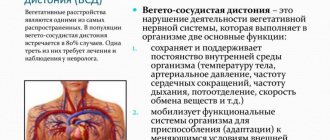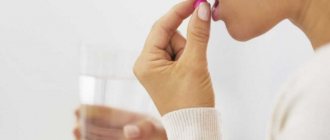Home » Traditional recipes
Folk recipes
Author Marina Savina Reading time: 11 min. Views 835 Published 02/24/2016
Coronary heart disease is becoming increasingly common in the world: every third woman and every second man aged 40 to 50 years is diagnosed with this diagnosis. But you can change these sad statistics by paying attention to your own health in time and starting treatment. Folk remedies for ischemia can help with this.
- Treatment of cardiac ischemia using traditional methods
Using decoctions of herbs, fruits and plant seeds - Consumption fees
- Treatment with other products
Symptoms of the disease
The main symptoms of the disease: pain and discomfort in the chest area, radiating to the back, weakness, shortness of breath, swelling. Rhythm disturbances are clearly expressed, and there are also a number of characteristic signs on the electrocardiogram. The pain is usually short-lived but noticeable. It occurs during physical and psycho-emotional stress, and disappears after this factor is eliminated.
Coronary artery disease develops quite slowly, so most patients miss the first, weak signs. It is customary to seek help when the disease is at the pre-infarction stage of development, and the pain is already chronic and prevents a person from performing everyday tasks.
Scientists have repeatedly conducted experiments and state that today no tablets can destroy dense cholesterol deposits in blood vessels, which lead to ischemic damage to the myocardium. Medicines only help eliminate pain and other symptoms, but they have an extremely negative effect on other parts of the body (gastrointestinal tract). Often, after such a medical treatment course, a person has to undergo serious and long-term therapy for the digestive system. Treatment of coronary heart disease with folk remedies used in combination with traditional drugs helps restore myocardial health, improve the condition of patients and does not have such a detrimental effect on other organs and systems.
When treating with folk remedies, it is necessary to use herbs and plants that have the following properties:
- painkillers;
- calming;
- antiarrhythmic;
- decongestants;
- general strengthening.
When treating cardiac ischemia using traditional methods, it is important to follow the dosage; you should not take several medications at the same time. Some medicinal plants are poisonous, and if dosages are exceeded, they can have adverse effects on the body. To avoid negative consequences, you need to know about the individual tolerance of the herbal components that make up the product.
Adjuvant treatment that complements traditional therapy
Taking medications is not the only method of treating ischemia. To successfully combat the disease, it is necessary to eliminate provoking factors and any sources of negative effects on the cardiovascular system.
Supportive therapy includes:
- use of folk remedies;
- compliance with a therapeutic diet;
- rejection of bad habits;
- moderate physical activity;
- correction of the daily routine;
- eliminating stress.
Such measures, in combination with traditional therapy, make it possible to achieve a stable therapeutic effect and prevent the development of potentially life-threatening complications.
Herbal infusions for pain relief
An effective remedy for pain in the heart after psycho-emotional stress is a homemade infusion based on common hop cones. To prepare the tincture, you need to prepare a collection of plants (No. 1 or No. 2). 1 tbsp. collection pour 1 tbsp. boiling water, leave for 15-20 minutes. The finished tincture should be taken half a glass three times a day half an hour before meals.
Collection No. 1. Hop cones, yarrow, valerian root, hawthorn flowers in a ratio of 1:2:2:3.
Collection No. 2. Hop cones, yarrow, motherwort herb pentaloba, lemon balm leaves, in proportions 1:2:2:1.
A tincture based on valerian officinalis helps with rapid heartbeat and pain in the chest area. First, you need to prepare a collection of plants from valerian officinalis, hawthorn fruits, lemon balm leaves and horsetail, in proportions 1:2:2:1. Pour 1 tbsp. boiling water 1 tbsp. ready collection, leave covered for 20 minutes. The resulting tincture is taken 1/3 cup half an hour before meals three times a day.
We exclude provoking factors
Treatment of tachycardia at home must begin with providing the patient with a state of rest. In order to avoid, if possible, stress that causes an increase in heart rate due to nervousness, you should first of all streamline your daily routine, making it as predictable as possible and providing enough time for restorative sleep and time in the fresh air.
The patient should review and change his diet, eliminating alcohol, caffeine-containing foods and drinks, and “heavy” fatty meat products. The “tachycardia diet” should include fresh and stewed vegetables, fruits, fish and seafood, cereals, juices and vitamin complexes rich in potassium and magnesium.
A carefully thought-out daily diet should be divided into five to six small portions so as not to “overload” the heart and not provoke new attacks of palpitations.
Herbs with a calming effect
According to patient reviews, herbal medicine helps well in rehabilitation after a heart attack, helps relieve symptoms of the disease, and improves general condition.
A well-known effective folk medicine for cardiac ischemia are tinctures based on rose hips, linden, lemon balm, chamomile flowers and oregano. You should take this tincture half a glass three times a day before meals. This combination of plant collection has a calming effect and helps improve memory.
To improve the supply of oxygen to the muscles of the heart and brain, as well as increase the elasticity of the walls of blood vessels, gently reduce pressure, a tincture of hawthorn fruits and flowers can be recommended as a natural sedative. Prepare an infusion of dried flowers and/or leaves at the rate of 2 tbsp. for 0.5 liters of water. The collection of plants is poured with boiling water and left for two hours, then filtered. The finished infusion is taken 50 ml half an hour before meals.
Healthy foods
Treatment of coronary artery disease with folk remedies is available to everyone, because it uses products that are usually found in every home. One of them is horseradish. The following recipe will help you cope with ischemia: take crushed horseradish root (5 g), pour boiling water (¼ cup), place it in a thermos or glass vessel and let it brew for 2 hours. This product is used for inhalation.
The second option for using horseradish: combine grated horseradish with honey and consume 1 tsp once a day. mixture with water. Repeat daily for a month.
Decongestant herbal preparations
When coronary heart disease is combined with arterial hypertension, herbal medicine based on herbal remedies that have a diuretic and sedative effect will be useful. This combination will help reduce blood pressure, relieve swelling and improve heart function.
Spring adonis, or adonis, whose active ingredients are cardiac glycosides, is often used in herbal medicine. It is a diuretic and sedative. Due to the property of adonis not to accumulate in the body, preparations based on it can be taken for a long time in the form of infusion, as well as as part of mixtures.
Diagnosis
The success and speed of the treatment process fully depends on correct diagnosis.
When diagnosing, specialists set themselves the following tasks:
- Determine the presence of secondary risk factors that may cause the development or worsening of the patient’s condition. Among them are the following:
- presence of diabetes mellitus;
- high blood pressure;
- impaired renal function;
- elevated blood cholesterol levels, etc.
- Determine as accurately as possible the state of the patient’s cardiovascular system.
- Select an individual course of treatment for each patient.
When diagnosing IHD, modern medicine uses the following methods:
- Consultation with several specialists. If during the initial examination factors were identified that could provoke a deterioration in the patient’s condition or the development of complications, it is necessary to consult doctors in other areas (cardiac surgeon, endocrinologist, etc.).
- Blood test (for sugar, total sugar, the amount of thyroid hormones, lipid profile, amount of cholesterol).
- Analysis of urine. It can be used to determine the level of protein in the urine, which will help identify problems with kidney function.
- Measuring blood pressure. It is measured in different states of a person (at rest or with a gradual increase in loads).
- X-ray of the sternum. Makes it possible to detect an increase in the volume of the sternum. In addition, this method makes it possible to detect the presence of blood stagnation in the lungs.
- Electrocardiogram. With its help, you can detect changes in the contraction of the heart muscle. Excellent results can be achieved when carrying out electrocardiogram monitoring, in which ECG readings are taken not only at different loads, but also at different times of the day.
- Ultrasound examination of the heart. This technique shows visually how the heart and myocardium work. With its help, you can see the presence of an area prone to heart attack or compaction on the walls of the heart.
- Coronary angiography. A thin probe is inserted through the femoral artery as close to the heart as possible. With its help, the presence of plaques or narrowing of the veins, aorta or heart vessels is visible.
The most effective is the latter diagnostic method. But without other techniques, the diagnosis would be much more difficult to establish.
Means for general strengthening of the heart and blood vessels
Apitherapy is considered an effective general tonic. For heart diseases, take rosehip infusion with the addition of honey. To prepare the tincture, you need to mince 10 pieces. lemons and 10 pcs. heads of garlic, add 200 gr. honey Infuse the resulting mixture for 7 days in a dark place in a closed jar. On day 8, the finished infusion should be taken 80 ml once a day. The course of treatment is two months.
A good general strengthening remedy is a decoction of viburnum berries with the addition of honey. Add three teaspoons of honey to 1 glass of berry decoction. Take the prepared decoction throughout the day, divided into three doses.
Hirudotherapy is very helpful in treating cardiac ischemia. To achieve the best effect, you need to complete a course of 10 procedures. On average, up to 6 leeches are used in one session.
Plants to help
The most readily available traditional medicine for the treatment of ischemia is garlic. He has many positive qualities. He is capable of:
- bring heart contractions to a normal rhythm;
- expand the lumen of blood vessels;
- prevent the formation of sclerotic plaques;
- actively remove bad cholesterol.
Treat yourself using only traditional medicine.
- means exposing the sick body to the risk of complications. Each treatment method must be approved by a doctor. Since even at first, plants are a medicine for ischemia, they can have side effects, for example, in the form of an allergic reaction.
Therefore, first, the doctor will advise you to take decoctions of individual herbs or small combinations in order to identify the allergen in time. Subsequently, it will be possible to use multi-component fees.
Recipe for garlic medicine: chop the product, add honey (1:1 ratio) and leave for a week. Then, half an hour before each main meal, take 1 tbsp. l. this garlic-honey mixture.
Garlic oil is prepared from garlic, which helps with ischemia, shortness of breath, atherosclerosis, and intestinal problems. To prepare it, peel the head of garlic, put it in a glass jar and fill it with unrefined oil (1 cup). Leave for 24 hours, shaking the mixture occasionally. After a day, add lemon juice (1 piece) and mix.
Leave for a week, also shaking the jar. Then treatment is carried out by taking a teaspoon of the mixture before meals for 3 months. Take a break for a month and repeat the course again.
In addition to garlic and lemon, herbal teas are useful for ischemia. The work of the heart is positively affected by:
All dried plants are mixed in equal quantities and poured with boiling water. The proportions of dry mixture and water are 1:10. The infusion should stand in a sealed container for 3 hours, after which it is ready for use. Time of administration: before meals.
Hawthorn is a natural healer of the heart and blood vessels. The dried herb plant is poured with boiling water and allowed to brew under the lid for a couple of hours. The strained infusion is taken 3 times a day, 2 tbsp. l.
To ensure that folk remedies for the treatment of ischemia are always at hand, you should prepare for this in advance. The following herbs should be stored in the house:
Mix all the ingredients (or those that exist), pour boiling water, leave for half an hour and strain. Drink half a glass in the morning and evening.
This remedy calms the nerves, gives good sleep, and has a weak diuretic effect, which is useful for poor circulation of the heart muscle.
Official and home remedies work well together. It is this kind of comprehensive treatment that will give the best results. Each treatment component performs its own function:
- medications relieve pain;
- home remedies support myocardial function.
In addition, an important component of treatment that cannot be avoided is proper nutrition.
It is important for heart function to limit factors that may contribute to the progression of the disease. This:
- normal motor activity;
- development of stress resistance;
- correct daily routine.



